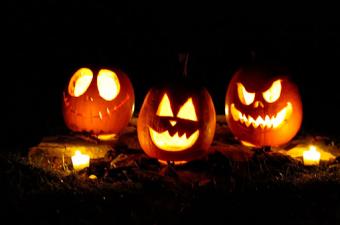Halloween Myths Debunked
Spooky season is upon us, and Halloween is almost here! That means the Halloween Carnival at the SDFC is just around the corner on Friday, October 29th! With this season comes many myths and stories about Halloween, but just how many are actually true? We take a look at the most common misconceptions about Halloween and shed some light on them.
Tainted candy
We hear it every year: check your Halloween candy for razor blades, poison, or drugs. According to one poll, 24% of parents are afraid that their kids will be harmed by the candy they receive during Halloween. It turns out that there are almost no reported cases of harm coming to a child from their Halloween candy, so you can feel safe curating your candy collection.
Halloween is a global holiday, but uniquely American
The tradition of celebrating Halloween can be traced originally to the British Isles, and is incredibly popular in America, but it is not a holiday that only the United States celebrates. Several other countries such as Canada, the United Kingdom, and some parts of Europe and Mexico also celebrate Halloween. In fact, because of the influence of social media, dressing up on Halloween has become more widespread throughout the globe. Halloween candy sales are the highest still in the United States, though!
Pumpkins are the original jack-o-lanterns
Pumpkin jack-o’-lanterns are so iconic to Halloween, celebrating the holiday without them would feel strange. The tradition of carving a jack-o’-lantern for Halloween goes back to Ireland and Scotland to ward off evil spirits. Back then, pumpkins were unavailable because they were a “New World” crop, so they carved faces into turnips or gourds. When Irish and Scottish immigrants came to the United States, they carried on the tradition with pumpkins, creating the iconic decoration we know today.
Custom of costumes
Halloween today is celebrated by dressing up in all kinds of costumes, from witches to sexy nurses, Marvel heroes to Disney princesses, and many more fun costume ideas. Was it always for the contests, though? It turns out this tradition hails from ancient Celtic times. It was thought that the veil between the worlds of the spirits and humans was thinner on Halloween night, and this made people scared for what the evil spirits or the spirits of the dead might do if they visited the living. Thus, dressing in costume for Halloween became a common practice. People would dress up to confuse the spirits and hide from them, thinking that if the spirit couldn’t identify them, they would be safe. This custom has since evolved to the fun costumes and contests that we know today, but originally it was done as a form of protection.
Satanic holiday
Some people are concerned that Halloween may be satanic in origin, or at least sacrilegious. When asked, the Church of Satan said that it does not venerate Halloween and that they don’t feel a connection to it. Halloween’s roots can be traced back to the Celtic holiday of Samhain, which was a day to celebrate the end of summer as well as the harvests reaped so far. It was also known as a time when the veil between the worlds was thinner, and so people would pay respects to their dearly departed. It was a holiday based on the time of the seasons, and it never had anything to do with satanism.
Remember to join us on October 29th at the SDFC fields from 7:30 to 10 pm for our Halloween Carnival. It will make for a night that’s frighteningly fun!
